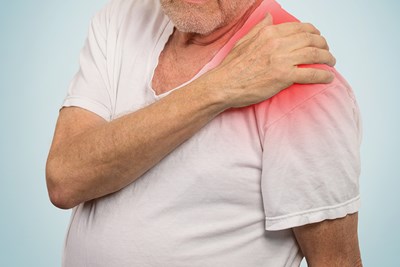The rotator cuff is a group of four muscles and their corresponding tendons. Their job is to hold the humerus (upper arm bone) in the shoulder joint and provide stability. Rotator cuff injuries range in severity from tendonitis (inflammation of the tendon) to muscle tears. No matter what kind of injury it is, it can take quite some time to heal. Here is a look at the timelines for recovery from rotator cuff damage.
Types of Injuries
The different types of rotator cuff injuries are all very similar in symptoms, risk factors, and treatment (with the exception of tear treatment, which is often handled surgically). However, the underlying anatomical causes illustrate the characteristic differences. The types of rotator cuff injuries include:
- Rotator Cuff Tendinitis: Inflammation of a tendon due to strain caused by repetitive overhead movement. Characteristics of tendonitis include pain while moving or sleeping on the side of the injured shoulder; stiffness, swelling, and weakness; and a clicking sound during arm movements.
- Rotator Cuff Impingement: Tendons are pinched between the humerus (upper arm) and acromion bone during arm movement. While different, impingement is often used interchangeably with tendonitis; symptoms and treatment are largely indistinguishable.
- Subacromial Bursitis: Bursae provides cushioning between bone and tissue at friction points. The bursa in the rotator cuff is the largest in the body; bursitis refers to inflammation of the bursa. Symptoms include outer shoulder inflammation and pain during upward arm movement or when lying on the affected side that may radiate down the arm.
- Frozen Shoulder or Adhesive Capsulitis: Lack of movement (often due to the necessity of rest for recovery from rotator cuff injuries) makes nearby tissues thick and stiffness. Symptoms include inhibited motion and shoulder pain.
- Rotator Cuff Tear: A full or partial tear of one of the four muscles or their corresponding tendons. Symptoms include shoulder pain, weakness, and motion inhibition.
Initial Healing Time
Tendinitis, impingement, and bursitis treatment all generally begin with ice, rest, motion restriction, nonsteroidal antiinflammatories (NSAIDs) like ibuprofen, and physical therapy. If these methods are unsuccessful, your doctor may try steroid injections at the site of injury. Sources indicate 50% of rotator cuff injuries are successfully healed with nonsurgical methods. The evidence does not suggest that waiting to perform the surgery will make it less likely, thus most physicians recommend six months of noninvasive treatments before discussing surgical options. By six months, the pain should have receded significantly. Pain or inhibited movement that is still present at this point suggests a tear which will likely need surgical intervention.
Surgical Recovery
Recovering from surgery can take another six months, even when performed with an arthroscope which requires only very small incisions. Approximately the first six weeks require nearly complete lack of movement with the affected arm in a sling, and physical therapy will begin during this period. During the next six weeks, movement will be reintroduced slowly. Only gentle movements requiring minimal strength will be encouraged. From three months postoperative to six months postoperative, the affected arm is slowly used more and more, building up strength and flexibility without placing too much strain on the shoulder. Obviously, each patient is different and these are not exact time periods for every person or surgery.
Frozen Shoulder Recovery Time
Frozen shoulder is different than the others as it tends to occur as a result of an existing rotator cuff injury. It develops slowly and goes through three stages: freezing (pain develops as motion slowly grows more inhibited), frozen (pain decreases as movement gets harder), and thawing (movement begins to return). It can take several months to go through each stage, nevermind from presentment to healing.



